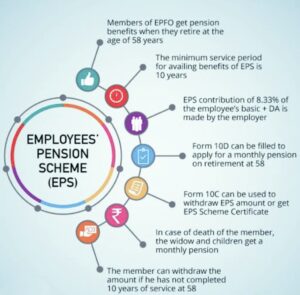Unified Pension Scheme 2024: Latest Developments, Benefits, and Challenges
As of August 2024, pension reform continues to be a pressing issue worldwide, with many countries striving to modernize and consolidate their retirement systems. The Unified Pension Scheme (UPS) has emerged as a pivotal reform strategy aimed at addressing the inefficiencies and inequities in traditional pension systems. This article explores the latest developments in the Unified Pension Scheme, its benefits, challenges, and future outlook.
What is the Unified Pension Scheme?
The Unified Pension Scheme (UPS) is designed to merge multiple pension plans into a single, streamlined system. Its goal is to simplify pension management, enhance transparency, and ensure fair distribution of retirement benefits. The UPS consolidates various pension schemes—ranging from public sector pensions to private retirement plans—into one integrated system.
Recent Developments in the Unified Pension Scheme (August 2024)
1. Global Adoption: Several countries have accelerated the adoption of unified pension schemes. For instance, the European Union has launched a pilot program for cross-border pension portability within its member states, aiming to facilitate retirement savings for a more mobile workforce.
2. Technological Integration: Advances in technology have been a key focus. New digital platforms and tools have been introduced to manage contributions, track investments, and provide real-time information to contributors, making the UPS more accessible and user-friendly.
3. Increased Coverage: Recent updates to the UPS in various countries have expanded coverage to include gig economy workers and freelancers, who previously had limited access to pension benefits. This inclusion aims to address the growing need for retirement security among non-traditional workers.
Objectives of the Unified Pension Scheme
1.Simplification: The Unified Pension Scheme simplifies the pension landscape by consolidating multiple plans into a single system, reducing administrative complexity for both individuals and pension administrators.
2.Equity: It aims to provide equitable benefits across different sectors and employment types, ensuring that all contributors receive fair treatment regardless of their previous pension schemes.
3. Transparency: The UPS enhances transparency by centralizing pension information and processes, making it easier for individuals to understand their benefits and for regulators to oversee the system.
4. Sustainability: The scheme is designed to be sustainable, adapting to demographic and economic changes to ensure long-term viability.
Key Features of the Unified Pension Scheme
1. Centralized Administration: A unified administration system manages all pension contributions and benefits, improving efficiency and reducing administrative costs.
2. Standardized Benefits: Benefits are standardized to ensure uniformity, reducing disparities between different pension plans and sectors.
3. Portability: The unified pension scheme allows for easy transfer of pension entitlements when changing jobs or sectors, increasing flexibility for workers.
4. Integrated Investment Options: Contributors have access to a range of investment options, allowing them to align their investments with their retirement goals and risk tolerance.
Benefits of the Unified Pension Scheme
1. Improved Efficiency: Consolidation reduces administrative overheads and streamlines processes, leading to cost savings and better service for pensioners.
2. Enhanced Security: A unified pension scheme provides a robust regulatory framework, protecting pension funds from mismanagement and market volatility.
3. Greater Accessibility: Simplified processes make it easier for individuals to access and manage their pension benefits.
4. Encouragement of Saving: A clearer and more attractive pension framework encourages greater participation in retirement savings.
Challenges and Criticisms
1. Implementation Complexity: Transitioning to a unified pension scheme system remains complex and costly. Integrating existing pension schemes and ensuring a smooth transition pose significant challenges.
2. Resistance from Stakeholders: Some stakeholders, including employers and pension funds, may resist due to concerns over loss of control and disruptions to established systems.
3. Equity Concerns: While the UPS aims for fairness, there are ongoing concerns about how well it meets the needs of various groups, particularly those with unique or exceptional circumstances.
4. Financial Stability: Ensuring the financial stability of the UPS is critical. Effective management and adequate funding are necessary to avoid jeopardizing retirees’ benefits.
Case Studies: Unified Pension Schemes Around the World
1. India’s National Pension System (NPS): India has made significant strides in expanding its NPS to cover more sectors and improve transparency. Recent updates have focused on increasing public awareness and simplifying investment choices.
2. Chile’s Pension Reform: Chile has continued to refine its unified pension system, with recent reforms aimed at addressing criticism regarding the adequacy of benefits for low-income workers.
3. Sweden’s Premium Pension System: Sweden’s system remains a model for integration, combining earnings-related and premium pensions. Ongoing adjustments aim to maintain sustainability amidst changing economic conditions.
Future Outlook of the Unified Pension Scheme
Looking ahead, the Unified Pension Scheme is likely to evolve further in response to ongoing challenges and opportunities. Key areas for future development include:
1. Enhanced Digital Integration: Continued investment in digital tools and platforms will improve the management and accessibility of pension benefits.
2. Broader Inclusion: Efforts to include a wider range of workers, including gig economy participants and self-employed individuals, will be crucial for the scheme’s success.
3. Regulatory Adaptations: As economic and demographic conditions change, the UPS will need to adapt its regulatory framework to ensure continued effectiveness and fairness.
4. Public Awareness and Education: Increasing public understanding of the UPS and its benefits will be essential for encouraging participation and ensuring informed decision-making.
Conclusion
The Unified Pension Scheme represents a transformative approach to pension reform, offering significant benefits in terms of efficiency, equity, and transparency. While challenges remain, recent developments and ongoing refinements are paving the way for a more inclusive and sustainable retirement system. As countries continue to implement and improve their UPS frameworks, the ultimate goal remains to provide a stable and fair retirement income for all.
Unified Pension Scheme 2024
Pension Reform Updates
Retirement Security
Global Pension Systems
Digital Pension Management
Equity in Pensions
